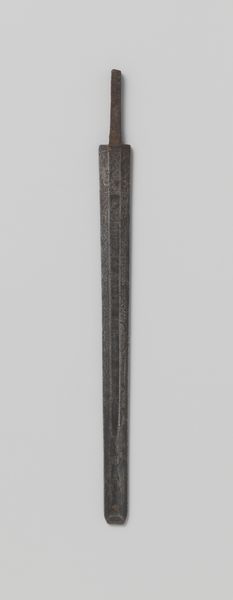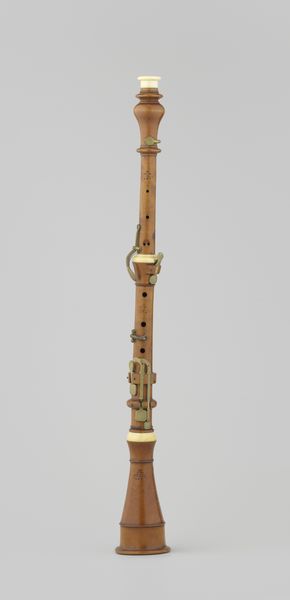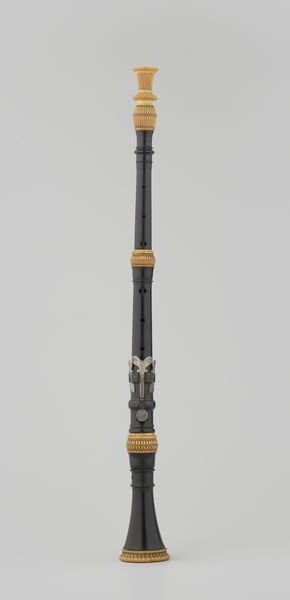
sculpture, wood
#
geometric
#
sculpture
#
line
#
wood
Dimensions: length 207.5 cm, diameter 2.5 cm, width 2.3 cm
Copyright: Rijks Museum: Open Domain
Editor: Here we have "vlaggenstok," a wooden sculpture from around 1830-1840 by an anonymous artist. I'm struck by the intense linearity of the piece, how a simple utilitarian object is rendered almost abstract. What do you see in this work? Curator: The first thing I notice is indeed its unwavering linearity. The artist has reduced the flagstaff to its essential form, emphasizing the verticality and the geometry inherent in its design. Do you see how the incised lines further accentuate this aspect? Editor: Yes, the rhythmic, almost repetitive lines create a certain visual texture. It almost reminds me of… musical notation? Curator: An interesting observation. Consider the structure of those lines in relation to the cylindrical form. Are they merely decorative, or do they serve to disrupt the otherwise smooth surface, forcing the eye to constantly re-engage with the object's form? What impact does it create? Editor: I think it both enhances and challenges the shape. It enhances the basic cylindrical nature through repetition, but it also breaks the continuity, making it visually dynamic, rather than static. I am surprised a common flagstaff could possess such sophisticated and intentional aesthetic qualities. Curator: Precisely. The success lies in the tension between its function and form, and its materiality and surface treatment. A careful examination of its formal elements elevates the flagstaff to something more than a mere tool. What are your final reflections? Editor: I initially viewed it as just a pole, but now appreciate the layers of complexity the artist has skillfully woven into it, playing with line, form, and texture. Thank you! Curator: Indeed. It exemplifies how formal analysis can reveal unexpected depth and nuance in even the most mundane of objects.
Comments
No comments
Be the first to comment and join the conversation on the ultimate creative platform.













